#World of Asdar
Text
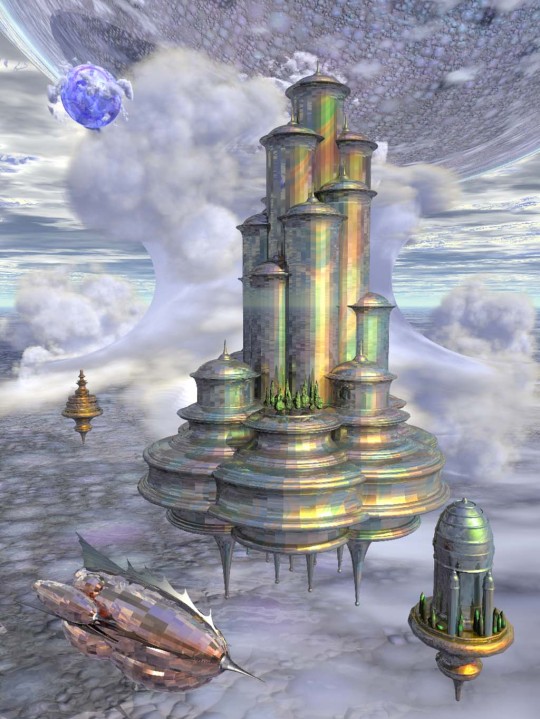
Roughly twenty years ago or more (like 2005 and earlier), practically another lifetime for me, I did 3D-modeling and then renders of my models in a now fully ancient software application called 'Bryce.' It was lots of fun, though I certainly wasn't going to quit my day job.
This picture is called 'Azalang Palace.' It's supposed to be an extra-dimensional palace in the mythical city of Azalamb.
by Bryce
I'll be posting more of these, so you can see how far digital art has come.
301 notes
·
View notes
Note
Here's a world building question: was there ever a sort of primordial chaos or something of that nature, prior to existence? Is it still around? Can the walls of reality be sundered and order put to the sword? Which is to say, what came before? Asking for a friend.
Ah, this is such a great question! Thanks for asking (and sorry it took me so long to actually reply)
So, according to the religious mythology of Chesnia, Elgovina, and Asdarant, originally there was nothing. Within the endless, white expanse, awareness formed. The awareness took the name Lady Daylight. Though all of existence was hers to do with as she pleased, she was lonely. So she gathered a bit of the endless expanse and formed a new awareness. This new awareness was too delicate to survive on its own, so she nestled it within her, letting it grow.
While it grew, she readied the universe for her soon-to-be companion. But she did not know to ready herself. When the awareness was strong enough, it split her open and poured forth. For the first time, there was not just endless white spread across all of existence. Now there were shadows and darkness. Thus, was Lord Midnight born.
etc., etc., Lady Daylight and Lord Midnight create the world, have two sons -- Mudd and Wash (who shape the land and oceans of Obroth) -- create the moons and stars, and send a mystic to the early people of Chesnia/Eswold to teach them how to help and be helped by the gods.
As far as worshipers of the Celestial pantheon are concerned, you would need to kill both Lady Daylight and Lord Midnight to destroy the ordered universe.
But myth usually doesn’t tell you everything ;)
While the gods are very much real, they were not the “original beings,” nor did they create Obroth. (They did alter some land/sea shapes, but mostly minor stuff). Now, they are extremely long-lived beings (Day/Midnight are around 4,500 years old, and could be considered “middle-aged”), but even they don’t really know what came before the start of the universe.
As the series is (technically) science fantasy (the science part doesn’t really kick in until around book 6/10), I assumed existence started with a “big bang.” I don’t really understand all the physics and such that goes into understanding the start of the universe, so... I don’t have any fun analogies to explain it in Obrothian terms lol
But dimensional walls can be (and, in some cases, are) ripped open. And magic always has the potential to be an uncontrollable force. There is the natural chaos of the world/physics, but no “Chaos” waiting and wanting to (re)consume everything. (Though there are some gods worshiped by other people on Obroth called variants of “chaos,” but those are the same kind of beings as Day/Midnight and crew, no matter what their individual mythologies say)
Hope that all makes sense and answers your question ^.^
Thanks again for asking!
xoxo
12 notes
·
View notes
Photo





L O O K B O O K #441
Hair: little bones - Naomi
Hairbase: SIIX - Russian hairbase omega
Tattoo: Custom, N/A
Top: BOYS TO THE BONE - Dep crop
Undies/stockings: BOYS TO THE BONE - Billig lingerie (@Cupid Inc)
Rings: FAKEICON - Asdar ring set (@Cupid Inc)
Shoes: alk - Bisons
Septum: Cae - Septum basic 1
Choker: Harajuku - Tattoo choker (N/A)
Nails: FAKEICON - Manil nails long (N/A)
Bed/plants/rack/deco: Dust Bunny - Various sets
Magazines/computer: Soy
Rug: The Loft & Aria
Clothes: g. - Scattered clothes
Plushies: Blupr/nt - Drippy bear, Parrie star, HBK, Prada (NEW!)
Mail/CD player: Plethora - Fan mail stack and CD player
Phone/pills: Beusy - Electra gacha commons
Pen: vive nine - Fuzzy Tip Pen
Neons: Atooly and The Horror
Ceiling lamp: DRD - Industrial lights
Chair: Vespertine - oslo chair
Wall art: Leviosa - Outta this world collage and punk collage
Backdrop: Custom
Poses: Various and custom
Shooting location: my studio(no slurl)
#sl#second life#little bones#siix#boys to the bone#fakeicon#alk#harajuku#dust bunny#soy#blupr/nt#the loft#plethora#beusy#vive nine#atooly#the horror#drd#vespertine#leviosa
24 notes
·
View notes
Text
Karachi Literature Festival Goes London! Either it was #KLFLondon hashtag on Twitter or a post on Oxford University Press’s Facebook page where they announced KLF’s launch in Royal Festival Hall of London’s Southbank Center as part of their annual Alchemy festival. Unfortunately though, we don’t get literary vibes from Pakistan much and KLF is an exception to that persona of our homeland. But this time, it wasn’t the case and did it make me feel proud, because I, along with many other literature & book-lovers attended Islamabad Literature Festival with full enthusiasm few weeks back.
Karachi Literature Festival was founded in 2010 by Ameena Syed and Asif Farruki, now Pakistan’s biggest literary event. It first branched out to Islamabad as ILF in 2013 and now has grown beyond Pakistan on International horizon. KLF London, produced by Oxford University Press, was organized in collaboration with the Southbank Centre, Bloomsbury Pakistan (a research collective from London), and Rukhsana Ahmed. Event brought Pakistani and International writers, authors and scholars under one roof. Event turned out to be very successful w.r.t. public participation. Event tickets were pre-sold and all sessions were jam-packed.
This slideshow requires JavaScript.
Mohammed Hanif, an internationally acclaimed Pakistani-origin author and journalist formally inaugurated the event by his keynote address. Hanif talked gave unique insights into Pakistan’s history. Guests and speakers were welcomed by Ameena Saiyid, KLF and ILF Founder & Director, Asif Farrukhi, KLF and ILF Founder, and Adrian Mellor, Managing Director, Asia Education, OUP. Pakistan’s High Commissioner to UK, Syed Ibn Abbas also addressed the participants.
Around 70 writers (Pakistani as well as International), scholars, critics, journalists, and artists participated, 20 sessions progressed simultaneously covering a broad range of themes, ideas, and subjects. Sessions were live streamed on Oxford University Press’ official Facebook page.
A separate strand for children which included an immersive theatre piece by Jungly Jadoogars; an animated film by the artist Fauzia Minallah; storytelling by the children’s author, Shahbano Bilgrami; and sing-along songs by the veteran Pakistani musician, Khaled Anam, were also a part of the festival.
Notable sessions from day 1 were ‘Transphobia and Misogyny’, a discussion on legislation around transgenders and women in Pakistan; ‘Reluctant Returners: Migrants, Refugees and Memories of the Homeland’ in which characters and fictions inspired by exile and displacement were explored. ‘Pakistani Renaissance? The Best in Cinema, Reportage, Theatre and Fashion’ with Atiqa Odho, Faris Kermani, designer Maheen Khan, and journalist Cyril Almeida.
Taimur Rahman, Moni Mohsin, and H. M. Naqvi weighed up the challenge of portraying Pakistan’s gender and class divide in ‘Blaming the Elite: Class, Greed, and Gender in Contemporary Pakistan’. Educationists, entrepreneurs, and experts including Farid Panjwani, Ahmereen Reza, Mona Kasuri, and Ameena Saiyid were part of panel discussion titled ‘Madrassas and Montessoris: Are Private Schools Keeping Madrassas at Bay?’.
Shuja Nawaz, Maleeha Lodhi, Ishrat Husain, and Victoria Schofield analyzed geopolitical and internal challenges Pakistan is facing in ‘Against All Odds: The Price of Prosperity in Pakistan Today’ . In the session ‘Urdu ki Zid Mai: At Loggerheads: Urdu vs English vs Regional Languages’ Basir Kazmi, Ishrat Afreen, Harris Khalique and Asif Farrukhi discussed if Urdu in Pakistan is under threat from English or the regional languages.
The evening sessions comprised thought-provoking discourses on ‘Good Muslim, Bad Muslim: Diaspora Pakistanis Caught in Post Brexit Hate-Storm’, with Ziauddin Sardar, Farooq Bajwa, and Iftikhar Malik debating the challenges faced by Pakistani diaspora in Europe; ‘Karachi: City of Lights and Gangs’ with Laurent Gayer, Nichola Khan, Mohammed Hanif, Sobia Ahmad Kaker, Omar Shahid Hamid, and Kamran Asdar Ali talking about the battle for Karachi and its resilience despite political conflicts; and ‘Tweeting for Social Change: How Social Media is Influencing the Political Scene’ in which Huma Yusuf, Umber Khairi, and Umair Javed discussed the impact of social media on Pakistan’s political scene.
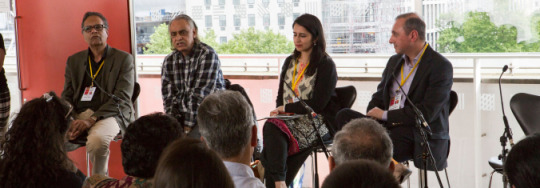
The highlight of the festival was the ‘Satrangi Mushaira’, which was an open mic session for Pakistan’s regional language poets to recite their latest offerings. Another session ‘In Their Own Words: Writers and Poets from Pakistan’, moderated by Muneeza Shamsie, featured poetry and prose readings by writers of Pakistani origin including Imtiaz Dharker, Aamer Hussein, and Zaffar Kunial. In ‘Partition Stories’ Nimra Bucha, Vayu Naidu, Shayma Saiyid, Amrit Kaur Lohia, and Sarah Ansari presented a medley of readings, film clips, recitals, dance and poetry about the Partition of India.

The evening came to a close by a kathak dance performance by Shayma Saiyid and a music concert by Khumariyaan, a Peshawar-based music band known for their fusion brand of Pashtun folk music.
Sponsorship support to the KLF London was provided by Bestway, Arts Council England, Third World Quarterly magazine, Salt n Pepper restaurant, High Commission of Pakistan in London, South Asia Institute of the University of Texas at Austin, and The Pakistan Society.
KLF founded Pakistan’s biggest literary event. Now branched out o London. #KLFLondon #KLF #ILF Karachi Literature Festival Goes London! Either it was #KLFLondon hashtag on Twitter or a post on Oxford University Press's Facebook page where they announced KLF's launch in Royal Festival Hall of London's Southbank Center as part of their annual Alchemy festival.
3 notes
·
View notes
Text
How Florida and Colorado are trying to build smart cities from the ground up
Ambitious new cities Songdo and Masdar may not have lived up to their promise, but smaller projects in the US aim to be laboratories for sustainable city planning
Masdar, on the edges of Abu Dhabi, was billed as the worlds first sustainable city when it was conceived in 2006. It was intended to be a zero-carbon, zero-waste city, with smart technology embedded across all the citys functions. A decade on and ambitions have cooled. The finish date has moved from 2016 to 2030 and city authorities have said it wont achieve the original purpose of being a net zero-emissions city.
In South Korea, the purpose-built city of Songdo was built on land reclaimed from the Yellow Sea. It is an aerotropolis where an airport, in this case Incheon, is the anchor for a city rather than vice versa. Planned as the worlds smartest city, it has sensors embedded into everything from waste management systems to roads, tracking citizens by measuring consumption, emissions and other activities. Yet the tech-driven city remains under-populated and unfinished.
While these cities may not have lived up to their original promise, new, smaller scale projects, spearheaded by private companies are aiming to act as laboratories for smart city planning.
The American aerotropolis
In a 400 -acre space just outside Denver International Airport, Japanese tech giant Panasonic has taken a lead role in the development of a US aerotropolis, Pea Station NEXT.
The commercial and residential project is influenced by a Japanese smart city that Panasonic squads have spent the better part of the past decade generating. Fujisawa Sustainable Smart Town is a 45 -acre community of 1,600 homes, around 30 miles outside Tokyo, which opened its doors in 2014.
Were taking the genesis of Fujisawa and accommodating that to Pena Station in an American style, says George Karayannis, vice-president of Panasonics CityNow.
Illustration of the plaza at Pena Station. Photo: L C Fullenwider, Inc
The American style entails less emphasis on security through video surveillance and facial-recognition technology, for instance. And while Fujisawa is residential, Pena Station is a commercial hub, connected to Denver mayor Michael Hancocks vision of the citys airport as an aerotropolis, and Panasonic is starting with the commercial and travel aspects of the future community. As the last pre-airport stop on the new 22 -mile light-rail line that connects central Denver with the airport, the company beckons travellers with an 800 -spot parking garage that also hosts a 1.3 -megawatt solar array.
Panasonic is also at work on its own office building in Pena Station, which should open in September with space for 300 employees. Next in line is the development of a 219 -unit apartment building, a hotel and several restaurants.
Pena Station is built on the smart infrastructure technologies that figure into smart city projects the world over fast internet, a microgrid with battery storage for all that solar energy, kiosks and smart showings, smart street lighting, smart parking, autonomous electric shuttles and more.
The community run on solar
Nearly 2,000 miles south-east of Denver in south-west Florida, Babcock Ranch, perched on the edge of a nature preserve, is being billed as Americas first solar community. It eventually aims to be a city of roughly 50,000 people living in an area the size of Manhattan.
Built on a former cattle farm and current wildlife passageway, and spearheaded by private developer Kitson& Partners, it hopes to be a model of how to build a hi-tech, low-carbon development.
A coalition of government, environmentalists and Kitson purchased the property in 2006, designating 74,000 acres of land for conservation and the other 17,000 acres for growth. Building started on phase one of the planned 25 -year project late last year and the first residents are scheduled to move in from January 2017.
An aerial shooting of Babcock Ranch. Photograph: Babcock Ranch
Since 2010, Kitson has partnered with IBM to design and develop the technology aspects of the city, which include gigabit-speed internet connectivity and a shared fleet of autonomous electric vehicles. The city will host microgrids throughout the community, and perhaps the most high-profile facet a huge 75 -megawatt solar farm being installed by Florida Power& Light.
That array will be enough to meet the towns entire wants during the day, although the city will be powered by an existing, natural gas-fired power plant at night. Kitson, and the developers who will construct the homes in each neighborhood, will also offer home solar facilities as an option for every purchaser. As energy storage technology continues to improve, it is hoped that demand on the power plant will dwindle as Babcock Ranch grows.
There is no shortage of challenges to planning and developing a tech-reliant city along a 25 -year timeline, especially as the landscape of available technologies is changing on a near-daily basis. The cornerstone of a successful growth is the ability to be flexible, Kitson tells. You have to be able to change to meet people[ changing] demands.
Limitations to smart cities
While smart city projects – such as Songdo and Masdar – have in the past over-promised and been over-hyped, it may be that smaller projects such as Babcock Ranch and Pea Station built from the ground up with future residents in intellect represent the future of smart city development.
Were not trying to create a utopia, Kitson says. Its the opposite of that. Were trying to offer people the ability to live their lives the style they want to.
But one lesson from the world of urban planning remains true, says Jennifer Henaghan, manager of the Green Communities Center at the American Planning Association collaboration and consensus are what makes a new city development able to stand the test of time.
Youre watching with these communities that theyre developing partnerships with tech companies, utilities and the state so that there are other stakeholders wholl be there, involved long after groundbreaking to subsistence and preserve those relationships and that development, she says.
Read more: www.theguardian.com
The post How Florida and Colorado are trying to build smart cities from the ground up appeared first on Top Rated Solar Panels.
from Top Rated Solar Panels http://ift.tt/2hbzO7y
via IFTTT
0 notes
Text




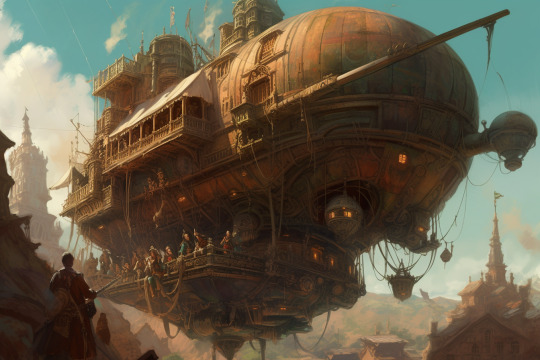
These soaring dirigibles are my attempts to create illustrations of titanships for my World of Asdar.
by Midjourney
59 notes
·
View notes
Text
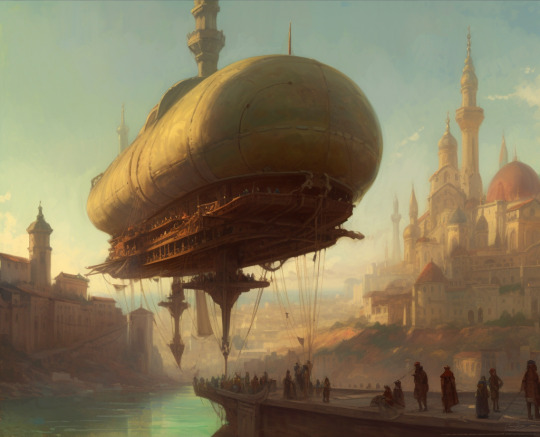



Titanships, that is great aerial titancraft airships from the World of Asdar, at one of the several great cities of that world
by Midjourney v5
51 notes
·
View notes
Text





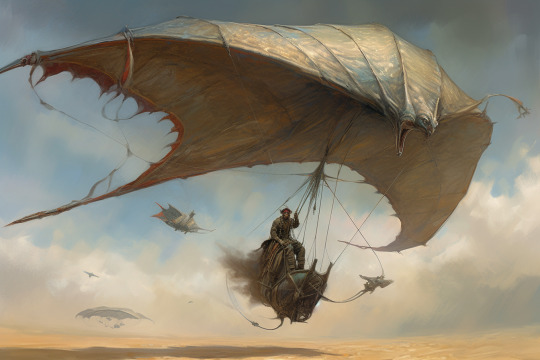
These magical flying gliders were created without the use of the blend function. These are the ones I liked the most.
by Midjourney
#AI Art#Midjourney#glider#magical glider#magical flying#magic flying#magic flight#/blend#skycraft#World of Asdar
57 notes
·
View notes
Text
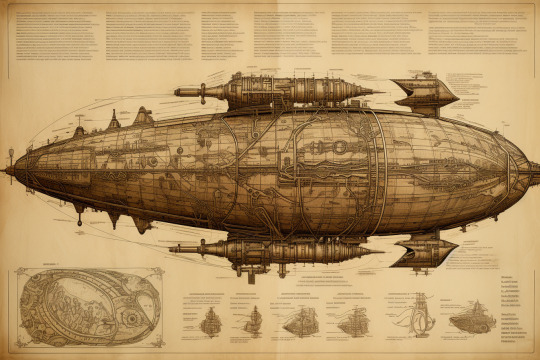






Fantasy Airships. I was hoping to get something I could use as an image of a titanship for my World of Asdar.
by Midjourney
62 notes
·
View notes
Text
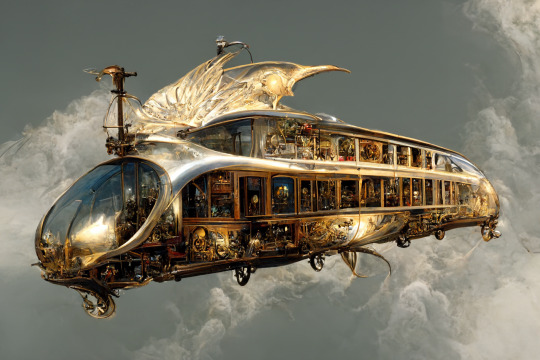
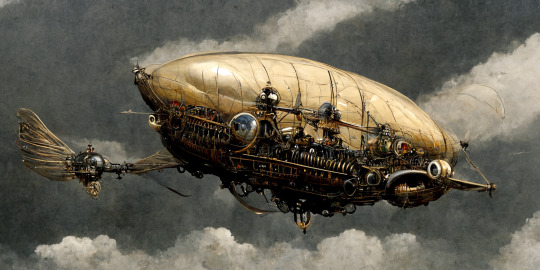
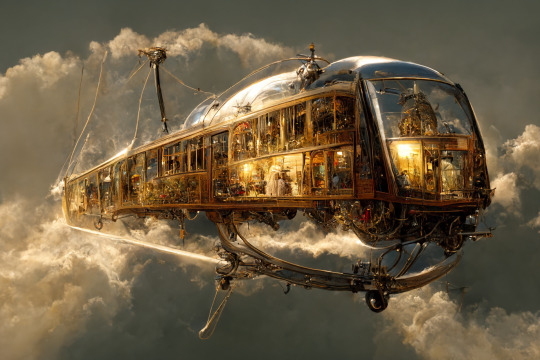
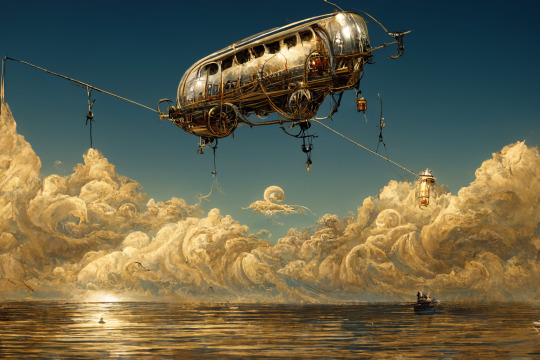
Midjourney Images. Various flying vessels designed for illustrations for the World of Asdar. On Asdar, these are called skycraft, and some specifically, 'titanships,' because they use ancient 'titancraft' for levitation and thrust.
268 notes
·
View notes
Text



Another attempt at airships.
by Midjourney v5.2
15 notes
·
View notes
Text

Steppe nomade warrior and his babhagir mount.
by Midjourney v5.2
6 notes
·
View notes
Text



Here are some more 'concept' pictures of the cities and palaces of the land of Vimalia in the World of Asdar. The last one is probably a good idea of what the City of Johaulia looks like. Johaulia is really more a cluster of small towns next to each other. It's also the capital of the Republic of Johaulia where the land of Vimalia is found.
by Midjourney v6
5 notes
·
View notes
Text
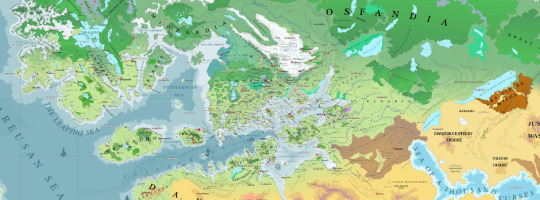
This is not AI art, but rather a map of part of my World of Asdar that I made in Freehand, a vector-based art program. I designed all the coasts and continents that you see above. There's actually quite a lot more of the map not show. This is just a little part that I work on the most. It is roughly equivalent to Europe, North Africa, and the Middle East.
#World of Asdar#Map#Fantasy World#Fantasy World Map#Asdar#Pytharnia#Barathorn#Corundy#Lucacia#Nymentho#Erechóreb#Erechoreb#Ambrinqua#Weshif#Danona#Skerrod#Midrardia#Osfanfia#Jaggudorns#Shelekhumbia#Addamantines#Pallathantic#Glaye#non-AI#non-MJ
4 notes
·
View notes
Text

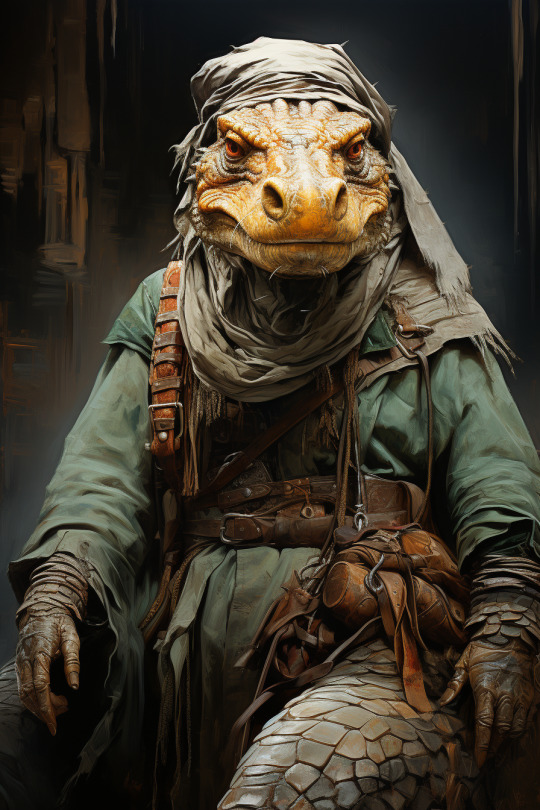


I didn't ask MJ for lizard men, but men riding giant lizards. However, I'm not disappointed.
by Midjourney v5
PROMPT
classical balanced composition, merchant warrior in a kaftan and turban riding on the back of a lizard saurian mount, mythical, ethereal, intricate, elaborate, hyperrealism, hyper detailed, strong expressiveness and emotionality, by Darek Zabrocki, Marc Simonetti, Ivan Laliashvili, Jean-Baptiste Monge, Gustav Bauernfeind, Michael Whelan, Stephen Hickman, Frank Frazetta, Gerald Brom, cinematic lighting, visual clarity, 200mm, UHD, 32k, 16k, 8k, HDR, 3D shading, Tone Mapping, Ray Tracing Global Illumination, Diffraction Grating, Crystalline, Lumen Reflections, Super-Resolution, gigapixel, color grading, retouch, enhanced, PBR, Blender, V-ray, Procreate, zBrush, Unreal Engine 5, Cinema 4D, ROMM RGB, Adobe After Effects, 3DCG, VFX, SFX, FXAA, SSAO, epic composition, --ar 2:3 --s 750 --v 5.2
3 notes
·
View notes
Text


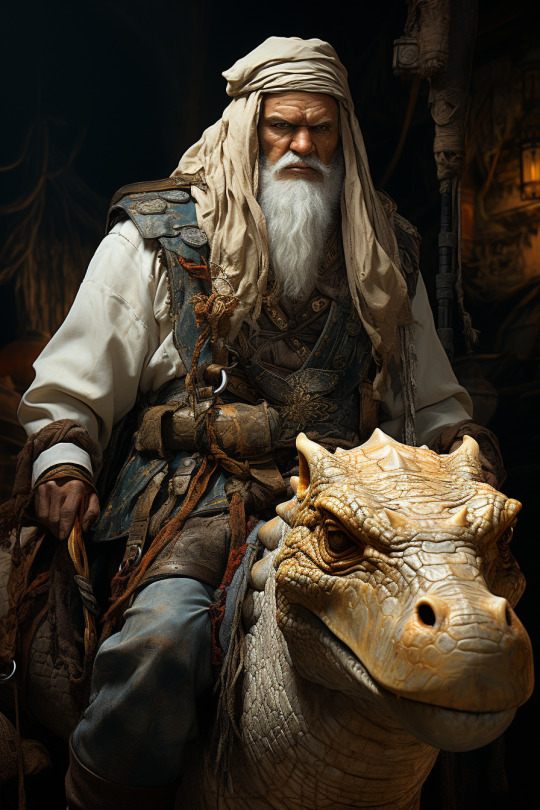

Men of the desert riding lizards. MJ confused the feet of the rider with those of the mount in the last image. Oh, Midjourney!
by Midjourney v5.2
3 notes
·
View notes